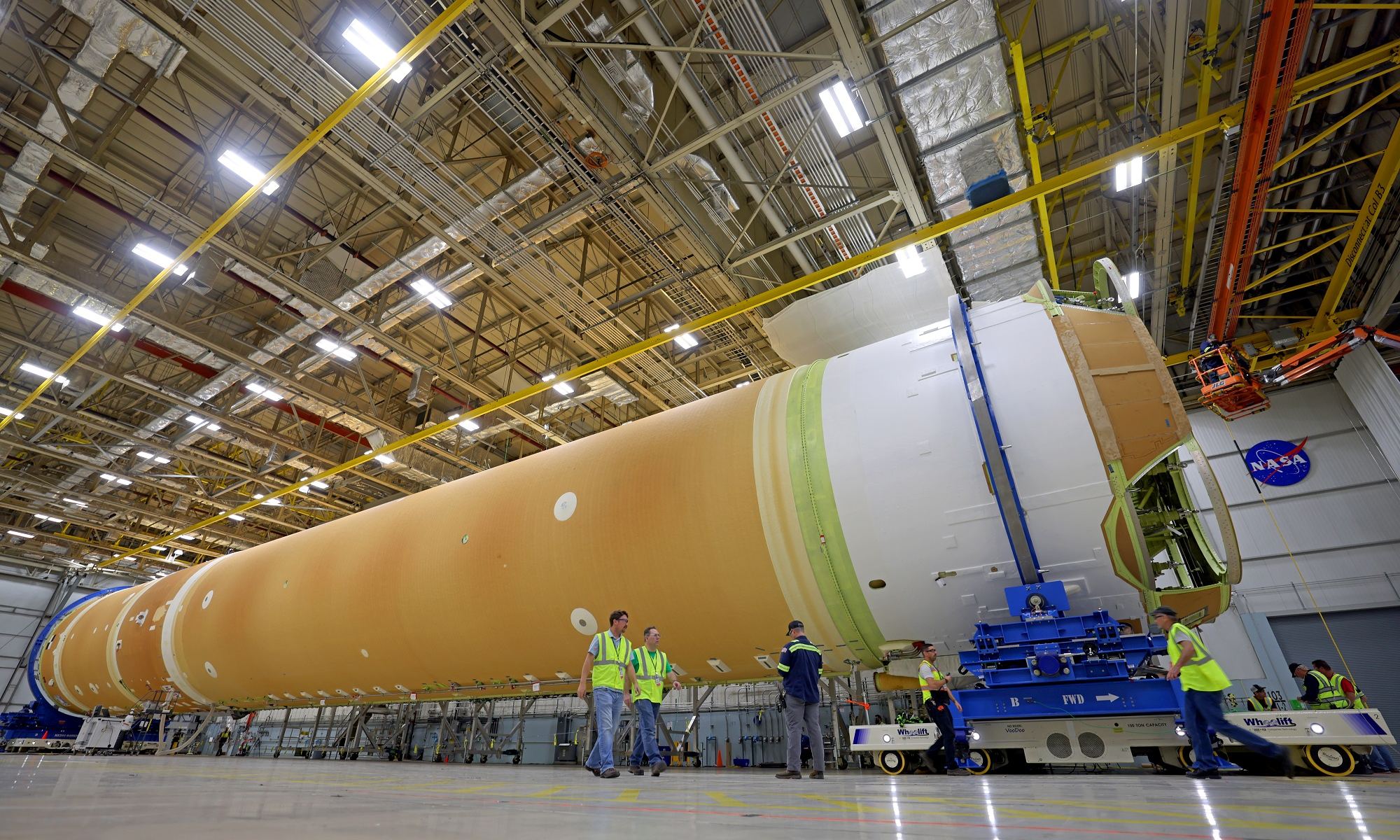In November 2024, NASA’s Artemis II mission will launch from Cape Canaveral, carrying a crew of four astronauts around the Moon before returning home. This will be the first crewed mission of the program, paving the way for Artemis III and the long-awaited return to the Moon in 2025. These missions will rely on the Orion spacecraft and the Space Launch System (SLS) super-heavy launch vehicle. At NASA’s Michoud Assembly Facility in New Orleans, teams of engineers have just finished integrating all five major structures that make up the core stage of the Artemis II rocket.
This included joining the engine section to the rest of the rocket stage, which technicians performed on March 17th. Located at the base of the 64.6-meter (212-foot) core stage, the engine section is the rocket’s most complex and intricate part. In addition to avionics, thousands of sensors, miles of electrical cables, and propellant lines, the engine section is a crucial attachment point for the four RS-25 engines and two solid rocket boosters, two pieces of technology from the Space Shuttle Era.
The next step will see the technicians integrate the four RS-25s into the engine section to complete the core stage. Between these four thrusters and the solid rocket boosters, the core stage will produce 3.99 million kg (8.8 million lbs) of thrust at liftoff. Once the engines are added, the crews at Michoud will begin integrating the core stage with its solid rocket boosters and the Orion Multipurpose Crew Vehicle, which consists of the spacecraft’s crew and service modules, the Launch Abort System, and the Interim Cryogenic Propulsion Stage.
In terms of payload, a crewed SLS will be able to transport between 95.25 and 118 metric tons (105 to 130 US tons) to Low Earth Orbit (LEO) and 34.5 to 39 metric tons (38 to 43 US tons) to the Moon. The rocket is vital to NASA’s Artemis Program, which will land the “first woman and first person of color” on the Moon by 2025. The long-term goal is to create a program of “sustained lunar exploration and development,” including the Lunar Gateway and Artemis Base Camp. In addition to lunar exploration, this infrastructure will enable crewed missions to Mars in the coming decade.
Everything is coming together for Artemis II, literally and figuratively!
Credit: NASA

